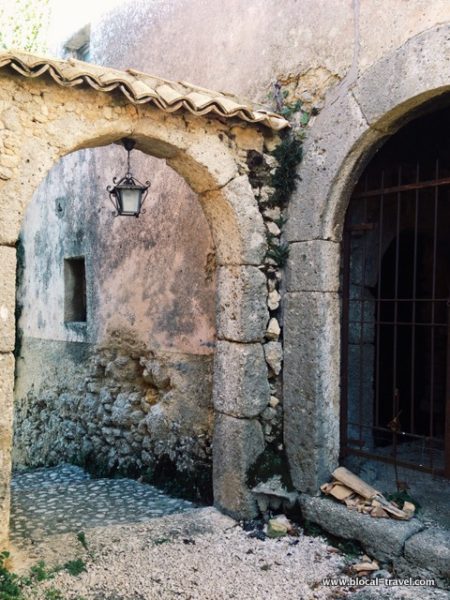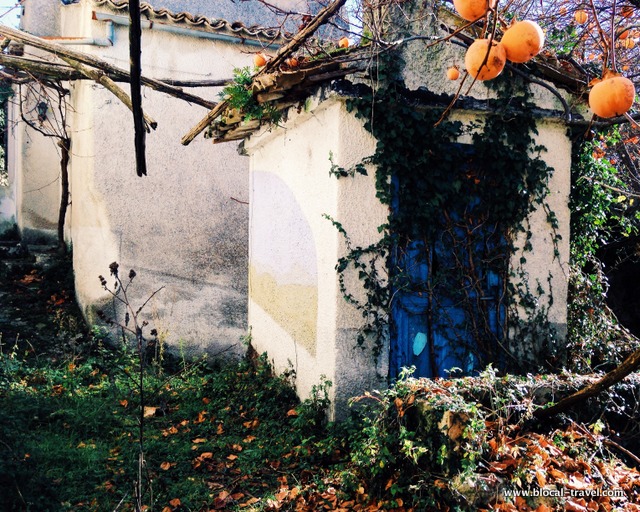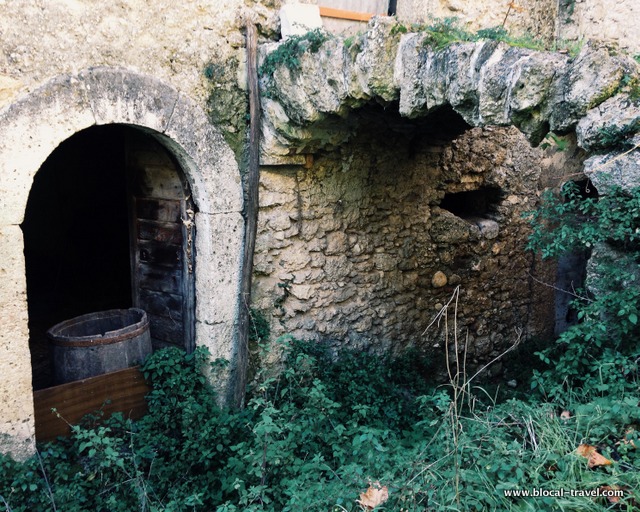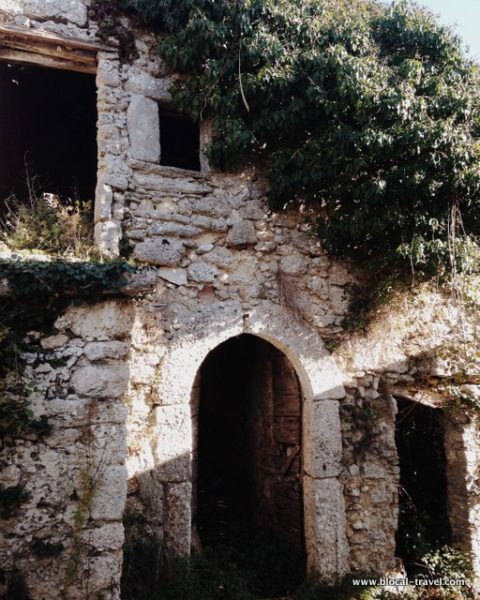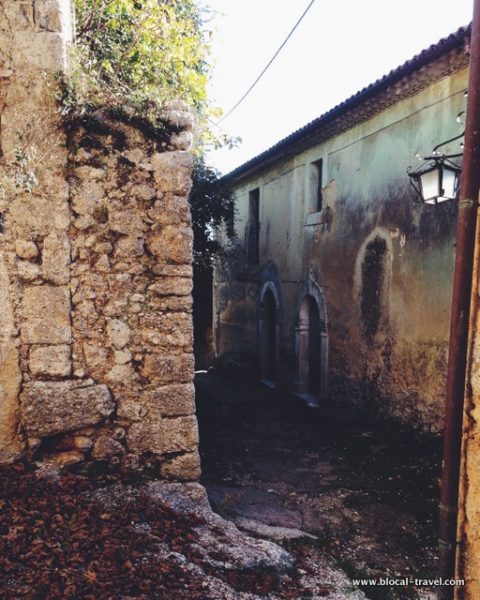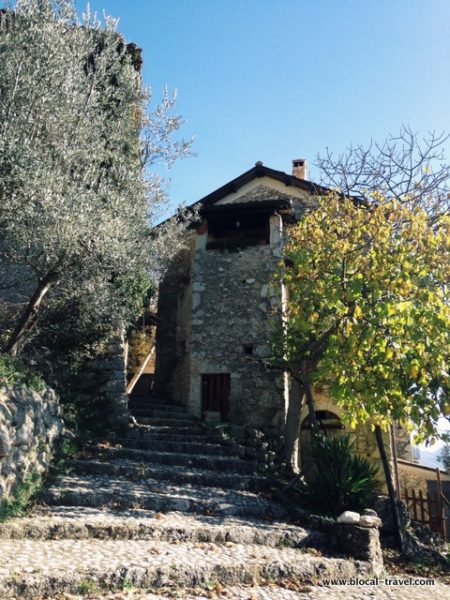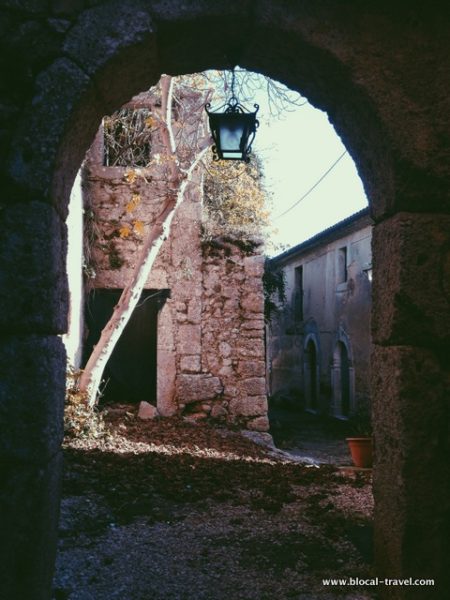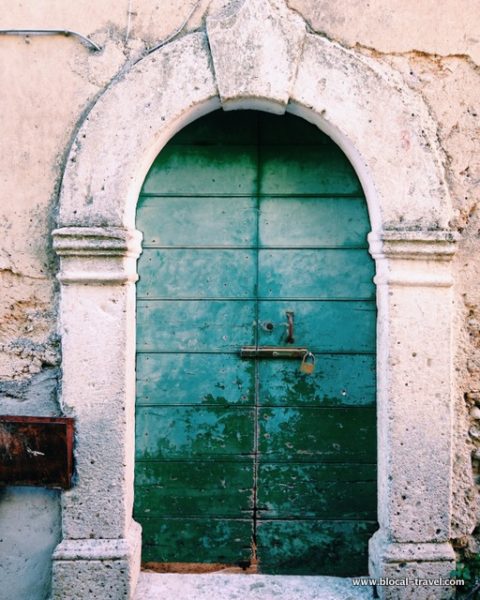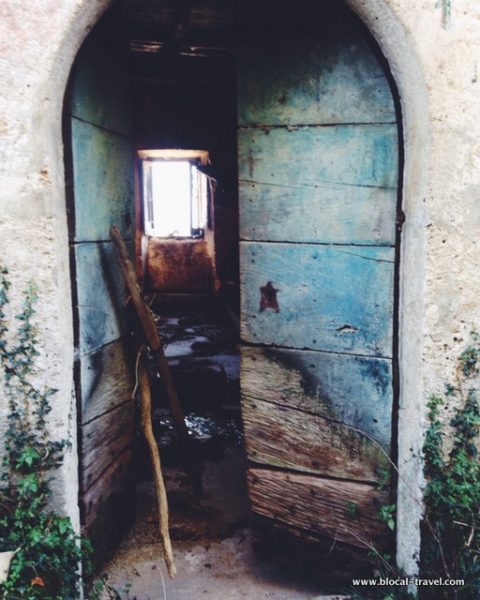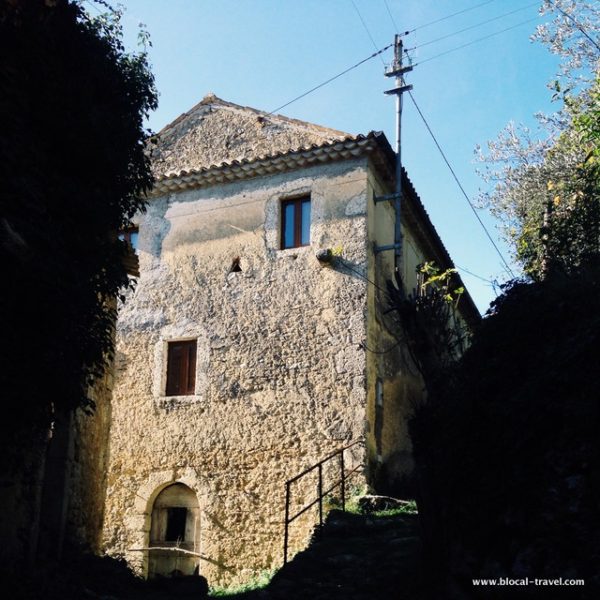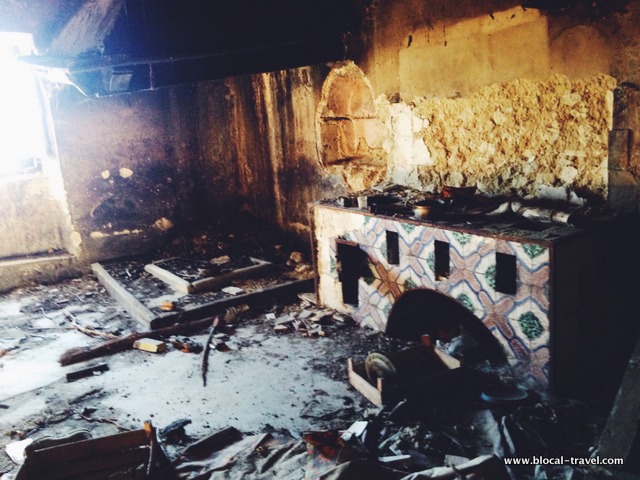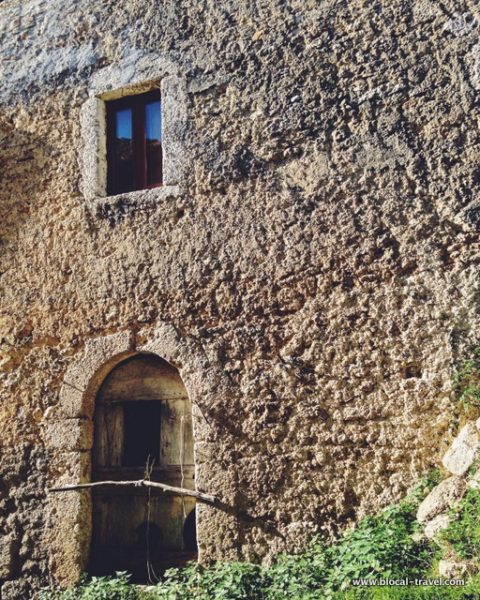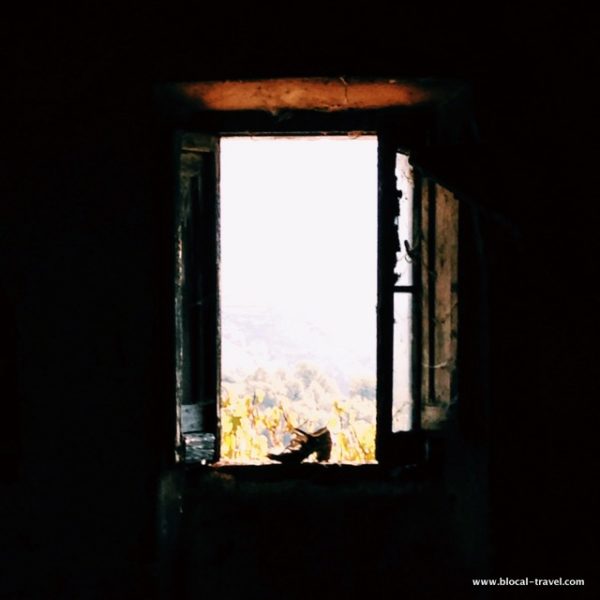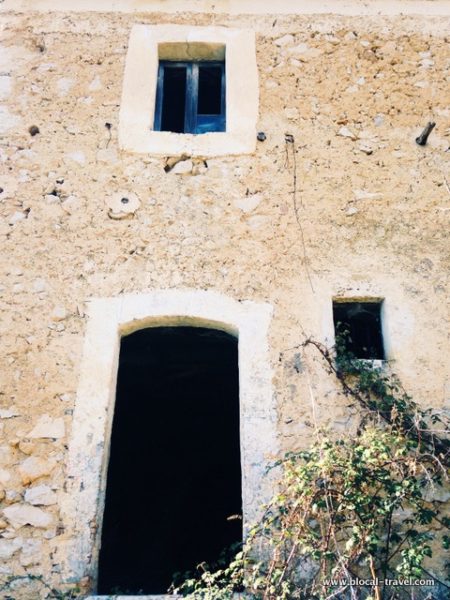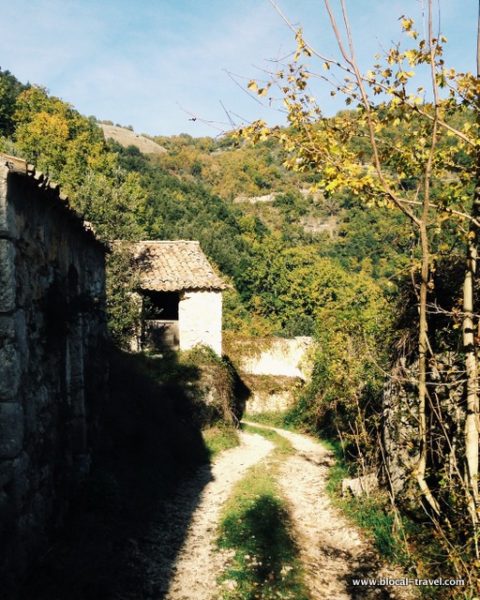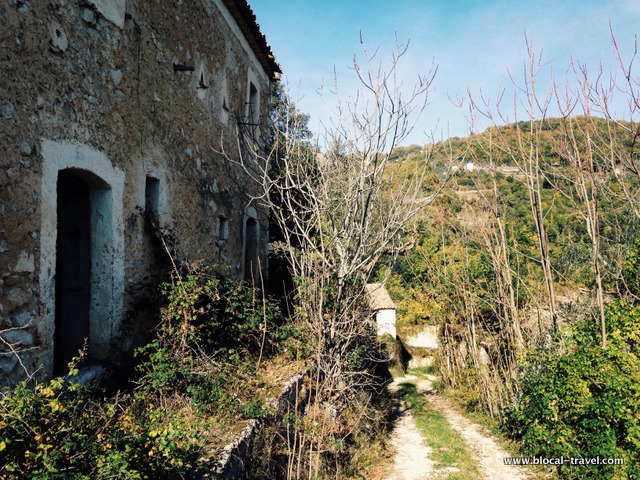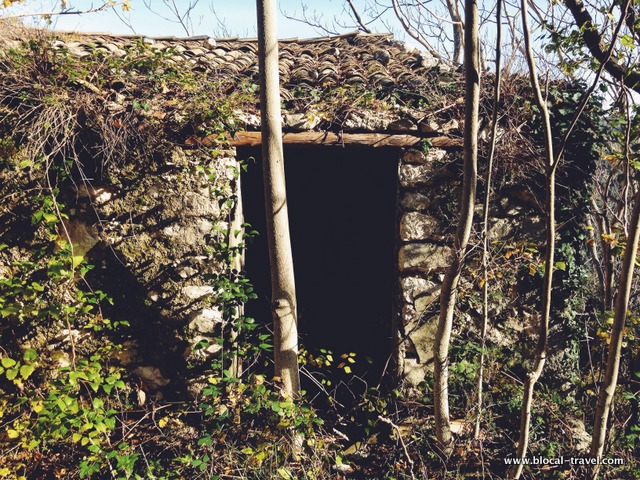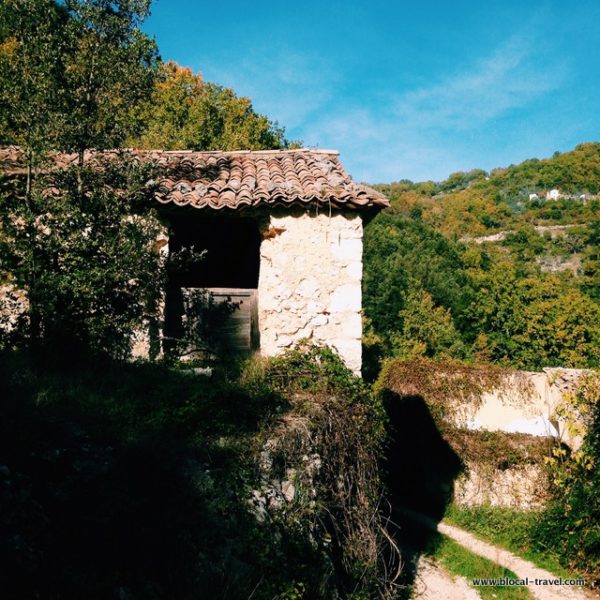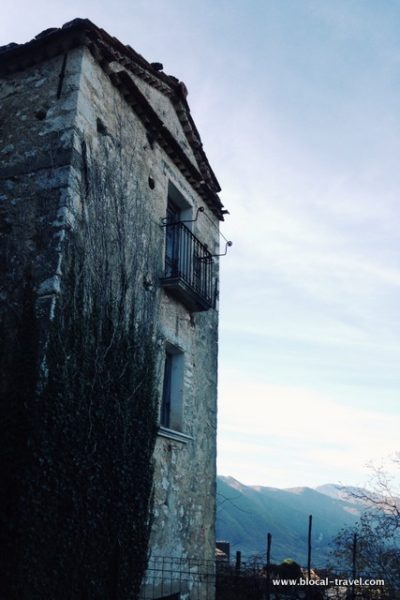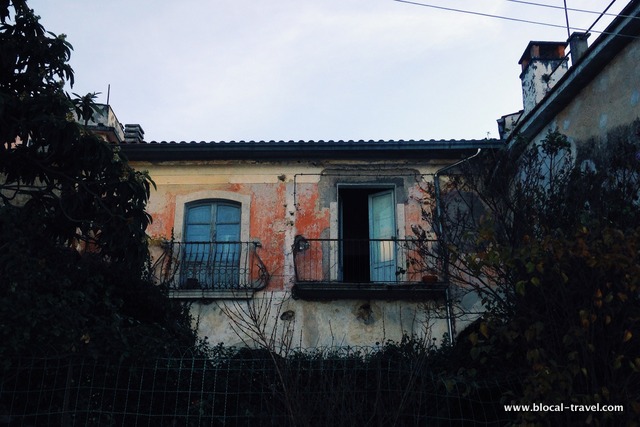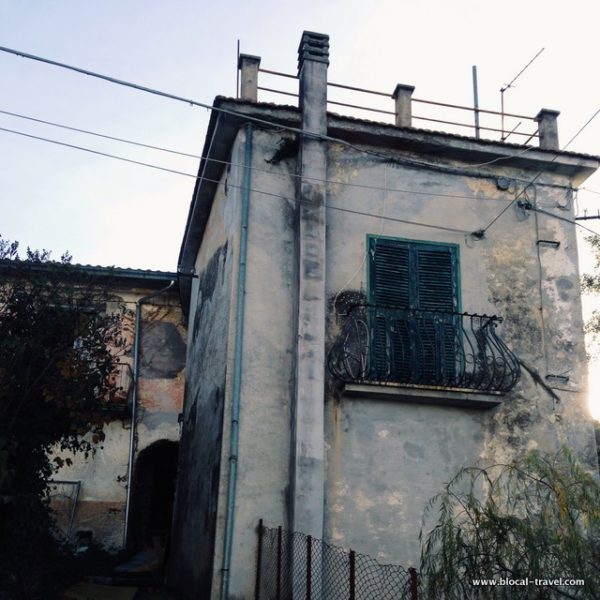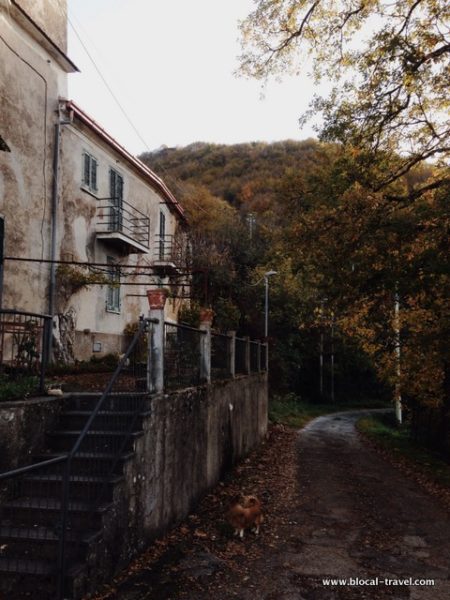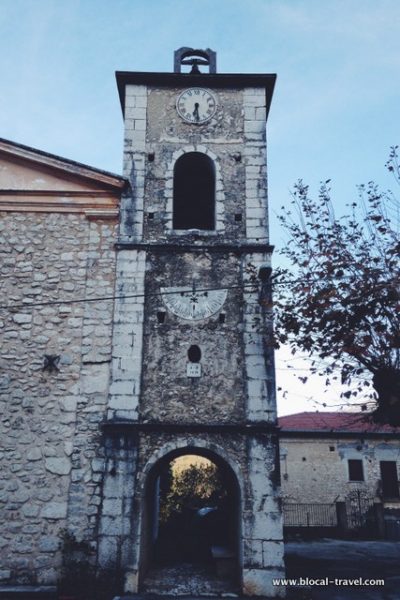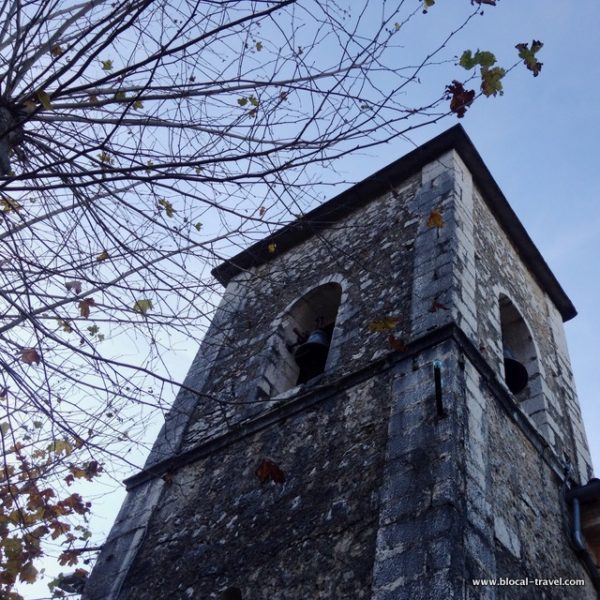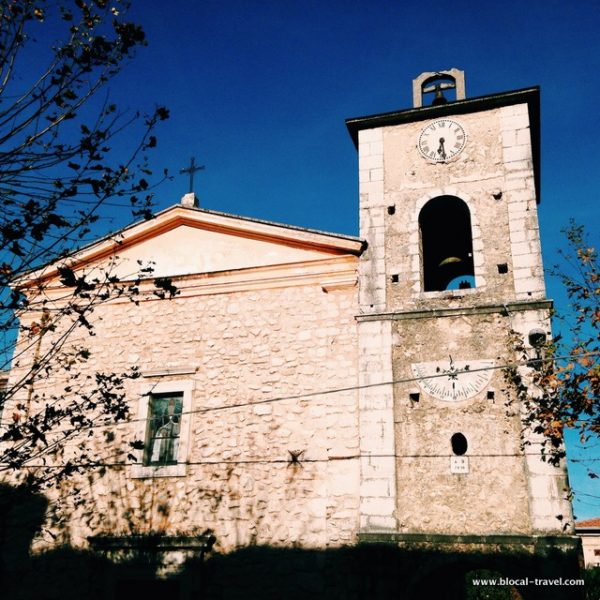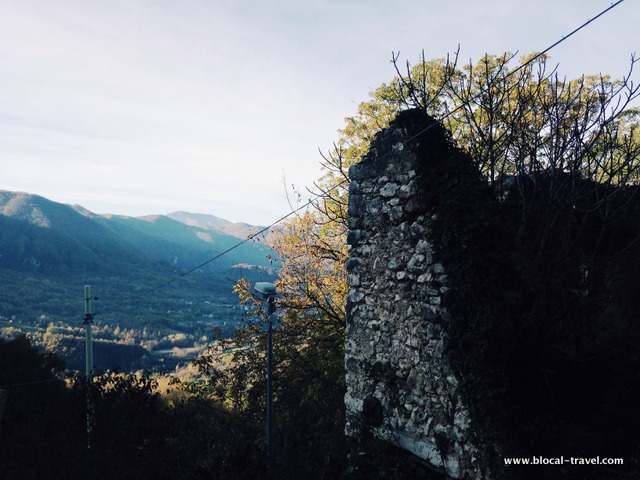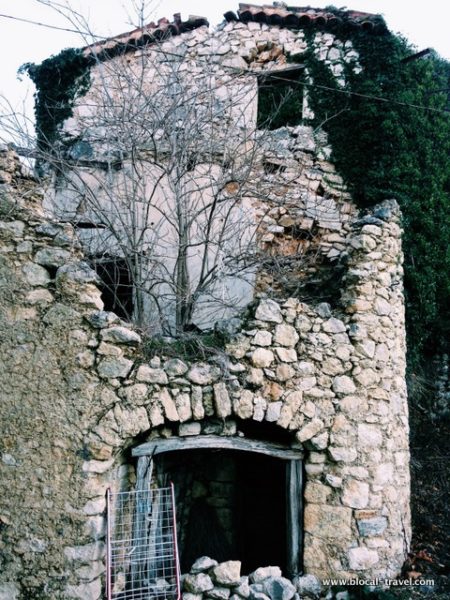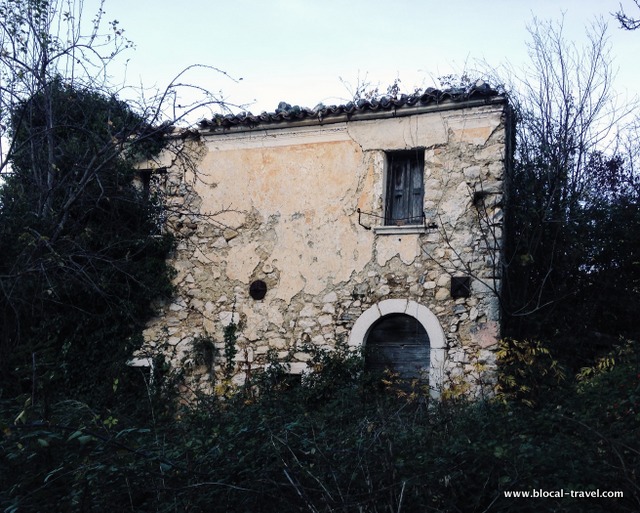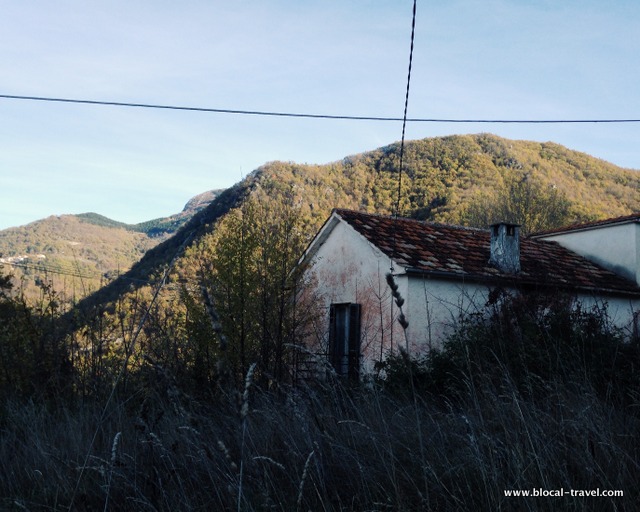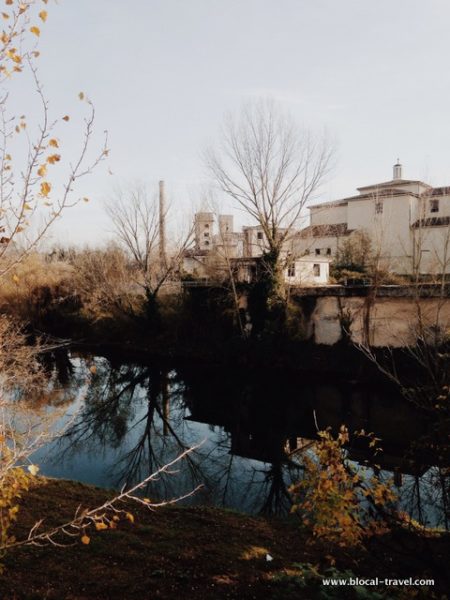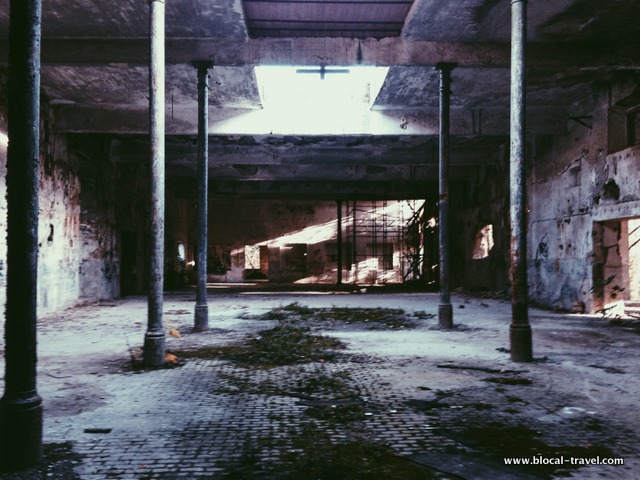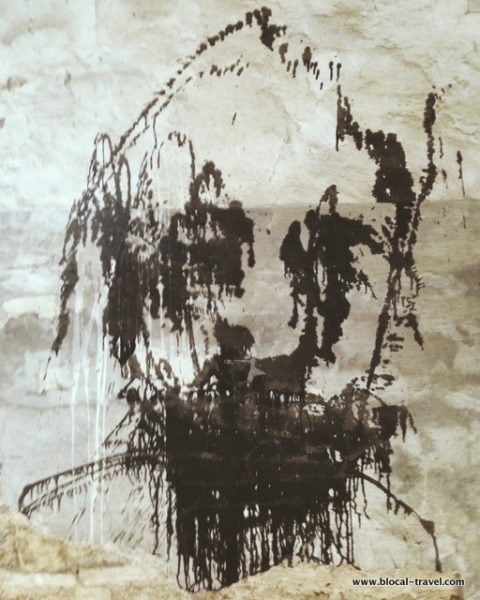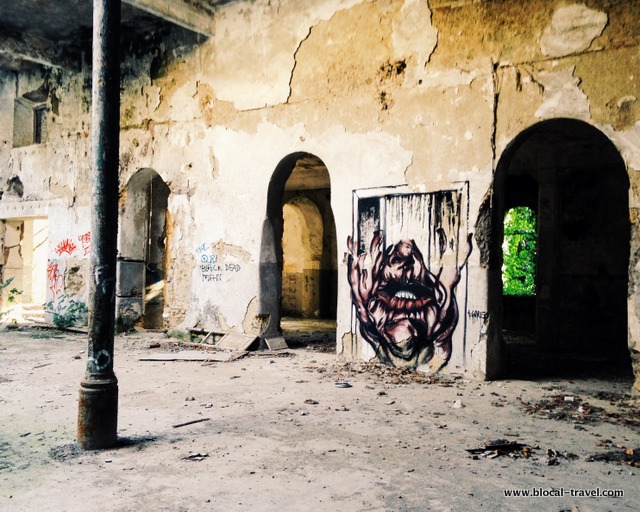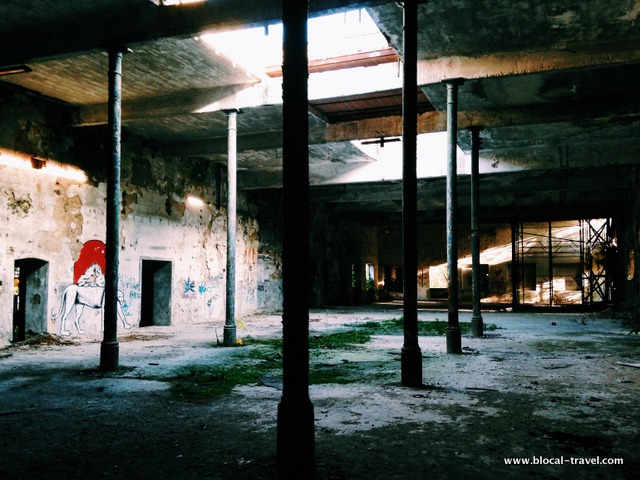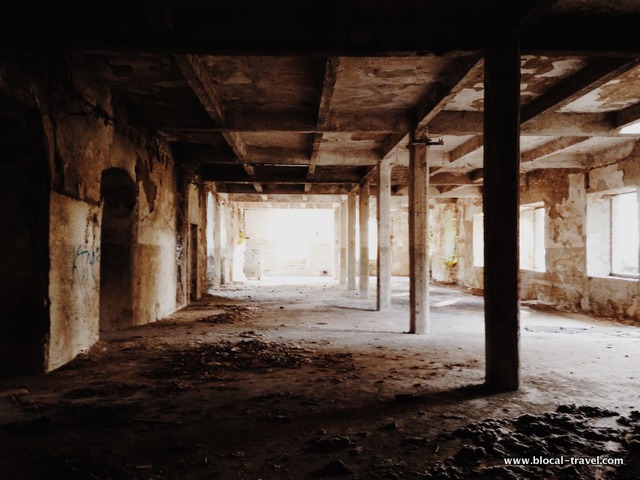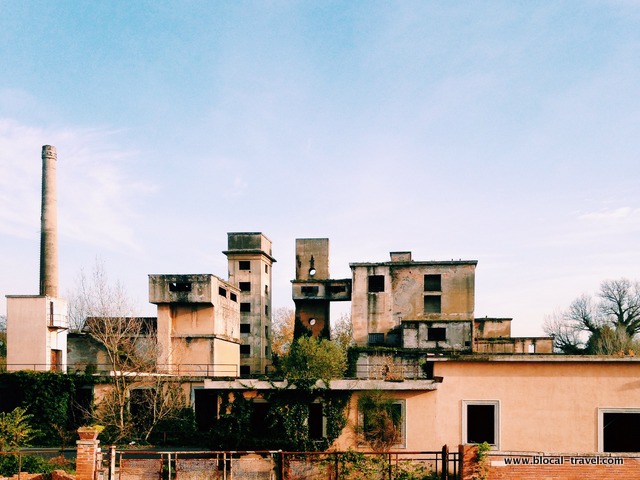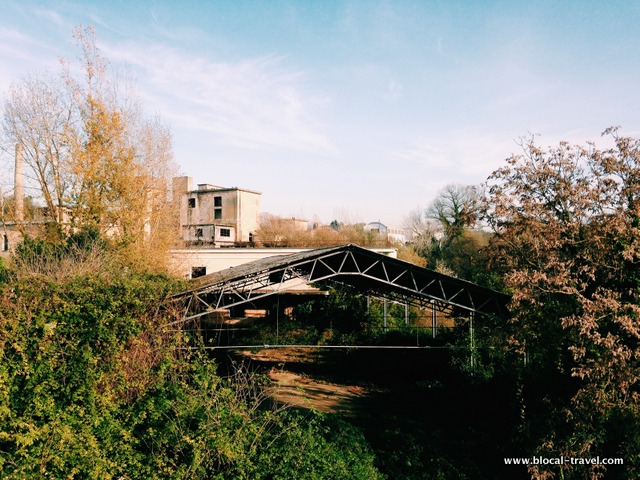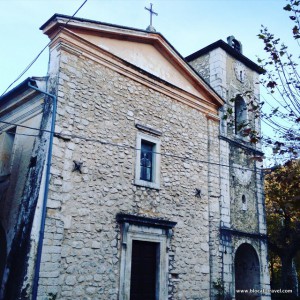
The greatest feature of these three ghost towns is that they all overlook a beautiful valley, which made me wonder why someone would ever have left that panoramic position. This was before reaching them by driving along the steepest and most uneven hill roads ever, which -eventually- made everything perfectly clear. ;-)
Ghost towns in Italy > BORGO FORGLIETA (Arpino, FR)
Lost in the hill over the pretty little village of Arpino, Borgo Forglieta used to be well-known throughout the valley since all the local kids went to the primary school there. When -around 40 years ago- all the small schools in the countryside were shut down to be merged into larger schools able to accomodate bigger groups of local children, the hamlet of Forglieta (that’s what ‘borgo’ means in Italian, btw) lost its popularity and was eventually abandoned.
The stone houses of Forglieta overlook the Valley of Liri and from Forglieta you can see the ghost town of Montecoccioli. Its narrow, unpaved alleys climb the hill, the ground is uneven and you must be careful to watch your step.
But don’t forget to look up! Forglieta’s decaying houses retain their original charm, and you can still spot some pretty details, such as a mosaic or a few abandoned objects from the daily life of its past inhabitants.
Ghost towns in Italy > MONTECOCCIOLI (Arpino, FR)
‘Excuse me, can you tell me how to get to Montecoccioli?’
‘What are you going to do in Montecoccioli?’ the farmer replied, astonished.
Compared to Borgo Forglieta, Montecoccioli looks way more run down and some houses are just ruins. Some of them are so covered with plants that they look like sheds.
The road there is very bumpy (at some point, I parked the car and continued on foot, as I was afraid of breaking some major components of my mom’s city car) and it crosses a beautiful olive grove typical of the area.
Montecoccioli is composed of a few stone houses aligned on an unpaved road. There is almost nothing left in the houses and all roofs are collapsed.
How to get there: I’m not sure that I took the quickest way… anyway from Arpino I followed the directions to the ancient town (which is where Cicero was born), then to the restaurant Lo Zoppo and after that to Santopadre village. I’m wondering if I could have taken the road to Santopadre directly from Arpino… Anyway you will need to ask the locals for directions as both Forglieta and Montecoccioli are very tricky to find.
Ghost towns in Italy > SAN GENNARO (Picinisco, FR)
San Gennaro overlooks the Comino valley, which is one of the most beautiful natural areas in the Lazio region. The village is inhabited by a few people during the summer season, which is why not all the buildings look neglected, but –as I went there at the end of November- I met only one old lady, who came up the hill to pick some wild chicory.
The most impressive abandoned building in the village is the 19th century church at the entrance to the village.
From this square, you can take either an alley going down the valley or an alley climbing up. The majority of the abandoned buildings are in the upper part of the village, while many others are scattered over the hill.
How to get there: there is a narrow road climbing up the hill as far as the ghost town of San Gennaro. Follow the SS627 past the village of Valle Grande and then, a few hundreds meters after the exit to San Giuseppe village, take the road that leads up the hill.
THE EX-PAPER FACTORY ‘VITA MAYER’ (Ceprano, FR)
The former paper factory ‘Vita Mayer’ is located in the center of Ceprano village, on the banks of the river Liri.
The well-known Italian paper company Vita Mayer acquired the factory in 1972, but paper had been produced there since the beginning of the century.
Shut down in 1976, this charming industrial archaeological site is now totally abandoned and there is no sign of a plan of reconvertion either from its private owners or from the local municipality.
The entrance is near the church of Santa Maria Maggiore and the access is very easy, as there are just a couple of torn down fences ostensibly protecting the site.
Unfortunately by the time I got there it was already getting dark, so I explored just the first building.
